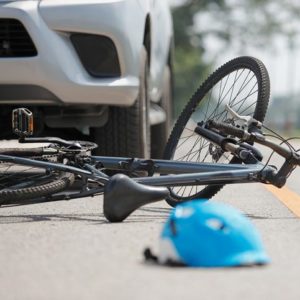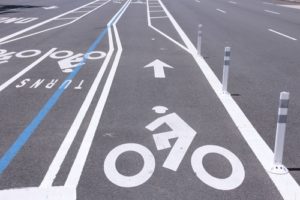With more than 13,000 commuters utilizing bicycles in Washington, DC alone, residents must understand DC bike lane dangers. With an astonishing number of bicycle accidents and fatalities each year, DC bicyclists have certain rights and responsibilities afforded to them via state laws.
If you are a bicyclist in the DC and the greater metropolitan area who has been hurt, the bike accident attorneys of Regan Zambri Long are here to help.
Contact Us Today to Schedule
a Free Consultation
Each year, nearly 1,000 bicyclists die and over 130,000 are injured in the United States, according to the CDC.. To combat this, protected bike lanes were implemented in many cities. A bike lane, cycle track, or separated bike lane, is a protected bike lane that is separated from traffic by a physical barrier. These barriers include parked cars, curbs, landscaping, or posts. While many may think that bike lanes have been successful in mitigating these accidents, the reality is not so.
According to a study by the Insurance Institute for Highway Safety (IIHS), not all bike lanes are created equal in DC. Factors that impact injury risk in protected bike lanes include:

This is because, at street level, the bicyclist was more likely to encounter a driveway or alleyway.
Further, the study concluded that when located at street level, it was better for the bike lane to be a conventional one, and not protected by a physical barrier.
While street-level protected bike lanes were more likely to end in accident or injury, they did not result in severe collisions.
The collisions most likely to end in fatality were those that occurred in a protected bike lane that intersects with a driveway or alleyway, or when a bicyclist must enter an intersection or junction.
There is a section of protected bike lanes in DC that has proven particularly dangerous for commuters. The section of the two-way protected bike lane is along 15th Street NW and has the highest injury risk rates than any other DC-protected bike lane included in the study. The lane runs parallel to a two-way traffic roadway and is crossed five times by other streets, and four times by alleyways and driveways.
The combination of two-way traffic and intersections is problematic for bicyclists because they not only need to be mindful of oncoming traffic, but also need to pay close attention to other cyclists.
Developed by the District of Columbia Municipal Regulations (DCMR), there are rules and regulations to improve bicycle riders in DC must abide by. These laws not only protect the cyclists from harm, but it also places parameters should a cyclist be involved in a collision with another vehicle or pedestrian.
However, know that if you are involved in a collision in DC on a bicycle, a bike accident lawyer can help you through the legal process.
If you are riding a bicycle in DC, you still must obey traffic laws. This includes the case of riding a bicycle on a sidewalk or along with it, or entering a crosswalk, as the cyclist must yield to pedestrians. If you are injured in a bicycle accident, but partly responsible, you could be denied the opportunity to file a claim.
Because of the use of conventional and protected bike lanes, you must ride with traffic, not against it. Riding against traffic may leave you more vulnerable to collisions.
There are no laws in DC that you must ride in the bike lane.
According to Title 18, Section 2202.10, a motor vehicle must leave a safe distance of at least three feet when passing a bicycle.
Q: Do I have to wear a helmet in DC when riding my bike?
Under Title 50, Section 1605(a) “Motor and Non-Motor Vehicles and Traffic”, Subtitle V, Chapter 16 “Regulation of Bicycles”, a person who is riding a bike under the age of 16 must wear a helmet.
While it is recommended adults also wear helmets, they are not legally required.
Yes, if you are riding your bicycle at night, you must install lights on it, or you must be wearing a light for motor vehicle drivers and other cyclists to be able to see you.

Following a bike lane accident, you need to:
We know that there are dangers associated with DC bike lanes. When you or a loved one are hurt while commuting in one of these lanes, know that you may have options for financial recovery following your injuries.
A DC bicycle accident lawyer from Regan Zambri Long can help. Our compassionate personal injury lawyers will:
We know that following a bike accident, you are worried about your ability to return to life as it was. This is why we represent you while you focus on physical recovery.
The bike accident lawyers of Regan Zambri Long can help you recover the following after a bike accident:
Time goes quickly and in Washington, DC, you only have three years to bring forth a personal injury case and two years to bring a wrongful death claim.
For a no-obligation, free consultation, contact the DC bike accident lawyers of Regan Zambri Long at 202-960-4596 or by contacting us online.